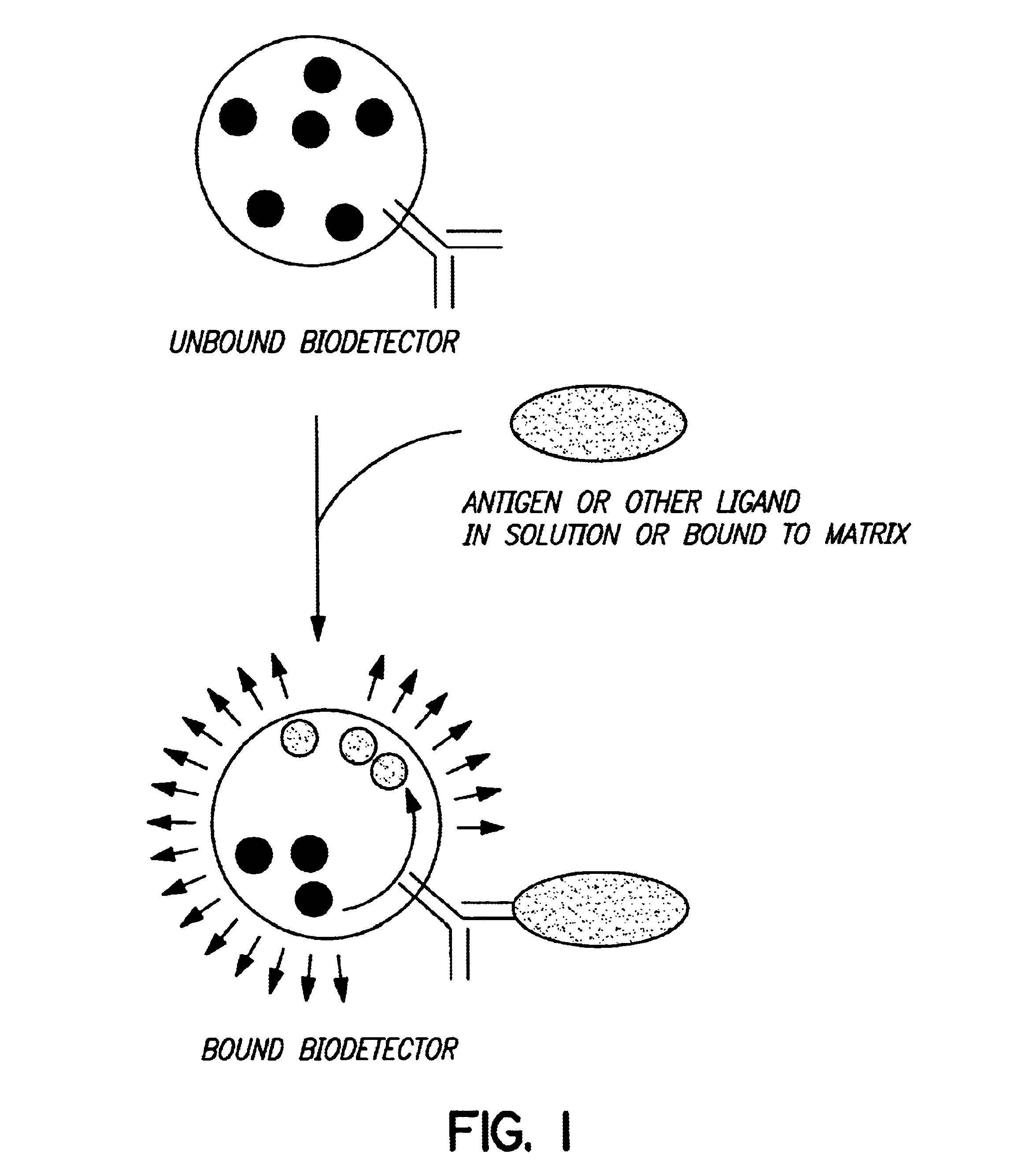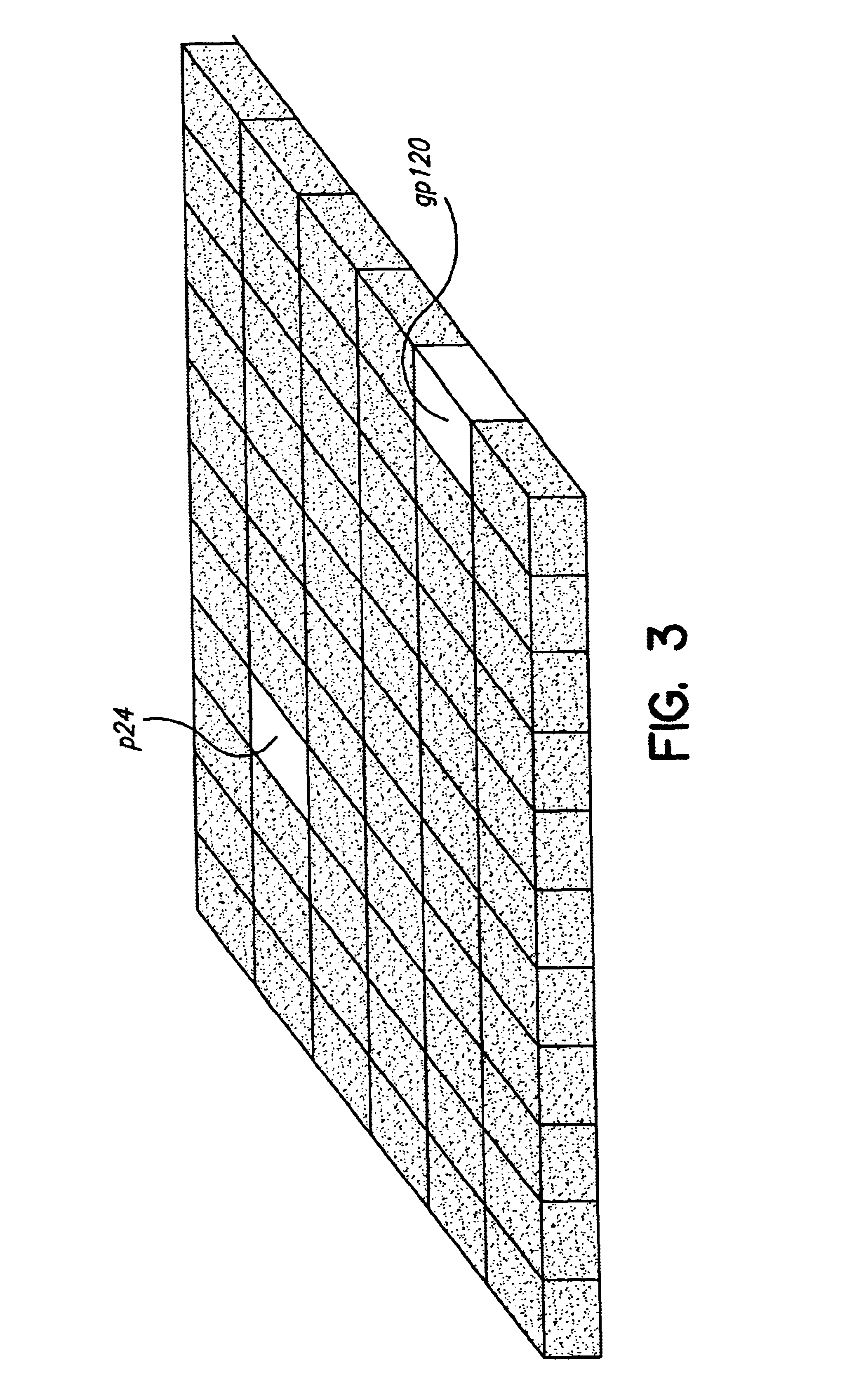Biodetectors targeted to specific ligands
a technology of biodetectors and ligands, applied in the field of biodetectors, can solve the problems of difficulty in detection of inability to detect low-level biological and inorganic materials in biological samples, etc., and achieves the effect of reducing the number of ligands, requiring highly skilled personnel and nucleic acid sequence knowledg
- Summary
- Abstract
- Description
- Claims
- Application Information
AI Technical Summary
Benefits of technology
Problems solved by technology
Method used
Image
Examples
example 1
Linking Signal Transduction to the Regulation of a Specific Gene (Approach 1)
The following example illustrates one approach which can be used to link the signal transduction to regulation of a specific gene.
A transposon is constructed to identify promoters that are activated by ligand binding to surface expressed ligand-binding molecules, e.g., antibodies. Promoterless reporter systems have been employed for identifying a variety of regulatory sequences in bacteria. Ronald et al., 1990, Gene 90:145-148. The transposon consists of (i) (1) a promoterless operon containing the genes for bioluminescence, (2) a selectable marker (kanamycin resistance gene; Kan), and (3) a negative regulator (the lambda repressor); (ii) an additional selectable marker (chloramphenicol resistance gene; Chl) expressed by the lambda operator; and (iii) a third selectable marker that is constitutively expressed (ampicillin resistance gene; Amp). Bacterial cells expressing the antibody of interest are transfor...
example 2
Linking Signal Transduction to the Regulation of a Specific Gene (Approach 2)
The following example illustrates a second approach which can be used to link the signal transduction to regulation of a specific gene. It employs a fusion protein composed of an antibody heavy chain and a surface protein known to transduce signals for gene regulation, and a promoter that is affected by this signal placed in front of the reporter operon.
A. Construction of luciferase reporter construct. The promoter region of the S. typhimurium phoN gene (Kasahara, et al., 1991, J. Bacter. 173:6760-6765) was amplified by PCR using standard methods (Ausubel, F. M., et al., Current Protocols in Molecular Biology (John Wiley and Sons, Inc., Media, Pa.) with specific primers (DP1, having the sequence 5' CTG CTG TCT AGA TTA CTT AGC TAC AGG GAG 3' (SEQ ID NO:1), corresponding to bp 5-22 of the sequence having Genbank accession number X63599; and DP2, having the sequence 5' GAC CAA GGA TCC CAT AAA GAC TCA CTC CGG 3...
example 3
Multiple Biodetectors
Construction of Cell-based Sensor Library. The molecular techniques detailed above may be applied to the generation of a library of cell-based sensors. The library is generated essentially as described in Example 2D. A mixture of antibody variable region genes amplified by PCR from either the original lymphocyte cDNAs or from the phagemids are purified and cloned into the cloning site of the PhoQ fusion plasmid constructed as described above. The plasmid is transformed into the phoN-lux E. coli and grown on antibiotic-containing media. The resulting transformants comprise a library of E. coli which can be screened for response to a selected antigen. Cells which light up for a selected antigen are then selected for use as biodetectors for that particular antigen.
Construction of Ordered Array Format. Individual biodetectors, or biodetectors selected from a library as described above may be arranged into arrays to provide a more convenient screening format. Such or...
PUM
| Property | Measurement | Unit |
|---|---|---|
| wavelength | aaaaa | aaaaa |
| wavelength | aaaaa | aaaaa |
| temperature | aaaaa | aaaaa |
Abstract
Description
Claims
Application Information
 Login to View More
Login to View More - R&D
- Intellectual Property
- Life Sciences
- Materials
- Tech Scout
- Unparalleled Data Quality
- Higher Quality Content
- 60% Fewer Hallucinations
Browse by: Latest US Patents, China's latest patents, Technical Efficacy Thesaurus, Application Domain, Technology Topic, Popular Technical Reports.
© 2025 PatSnap. All rights reserved.Legal|Privacy policy|Modern Slavery Act Transparency Statement|Sitemap|About US| Contact US: help@patsnap.com



